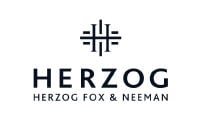
Head of legal | Walnut






Liron Amram
Head of legal | Walnut
Team size: Two
Looking forward, what technological advancements do you feel will impact the role of in-house legal teams in the future the most?
There is no doubt that AI and machine learning are changing the way we work, live, and think. These changes can have a tremendous positive impact on in-house legal teams. By leveraging these technologies, in-house legal teams can streamline legal processes, automate routine tasks, create transparency when it comes to patterns and trends in legal work, encourage standardisation throughout the organisation, reduce bottlenecks, and free up time to focus on higher volume of legal matters. And the cherry on top – not only will these technologies improve the quality of in-house legal teams’ work but will also give them more time to focus on the more important stuff (like learning the ukulele).
What would you say are the unique qualities required to be successful as an in-house lawyer in your industry?
To succeed as an in-house lawyer in a hyper-growth, high-tech startup, you must not only be agile, but also work quickly and effectively to identify and analyse legal risks and opportunities. You will also need to adapt to frequent changes, vague scenarios, unexpected circumstances, and unprecedented situations. These can be anything from shifts in the company’s objectives, to changes in laws or regulations. On top of that, given the often-complex dynamics at play, in-house lawyers must have strong interpersonal skills that will help them build trust and credibility within the organisation and maintain a positive and collaborative working environment.
What can law firms do to improve their service to the legal department?
Law firms can improve the quality of their service to legal departments by:
Focusing on building a solid understanding of the client’s business model, goals, objectives, and operations; Staying up-to-date with the latest developments and trends in the client’s industry; Adopting an unorthodox and creative approach when providing legal advice and guidance, instead of the usual conservative approach; Unambiguously communicating legal risks and implications, without being afraid of providing clear ‘bottom lines’; Being proactive in identifying and informing the client about potential legal risks and opportunities; And last but definitely not least, leveraging technology to streamline processes and increase efficiency.